Portfolio.
 Abril Villanueva Industrial Designer
Abril Villanueva Industrial Designer


 Abril Villanueva Industrial Designer
Abril Villanueva Industrial Designer

My name is Abril Villanueva and I am an Industrial Designer graduated from Muthesius University of Fine Arts and De sign in Kiel and from the Research Center in Industrial De sign from the National Autonomous University of Mexico.
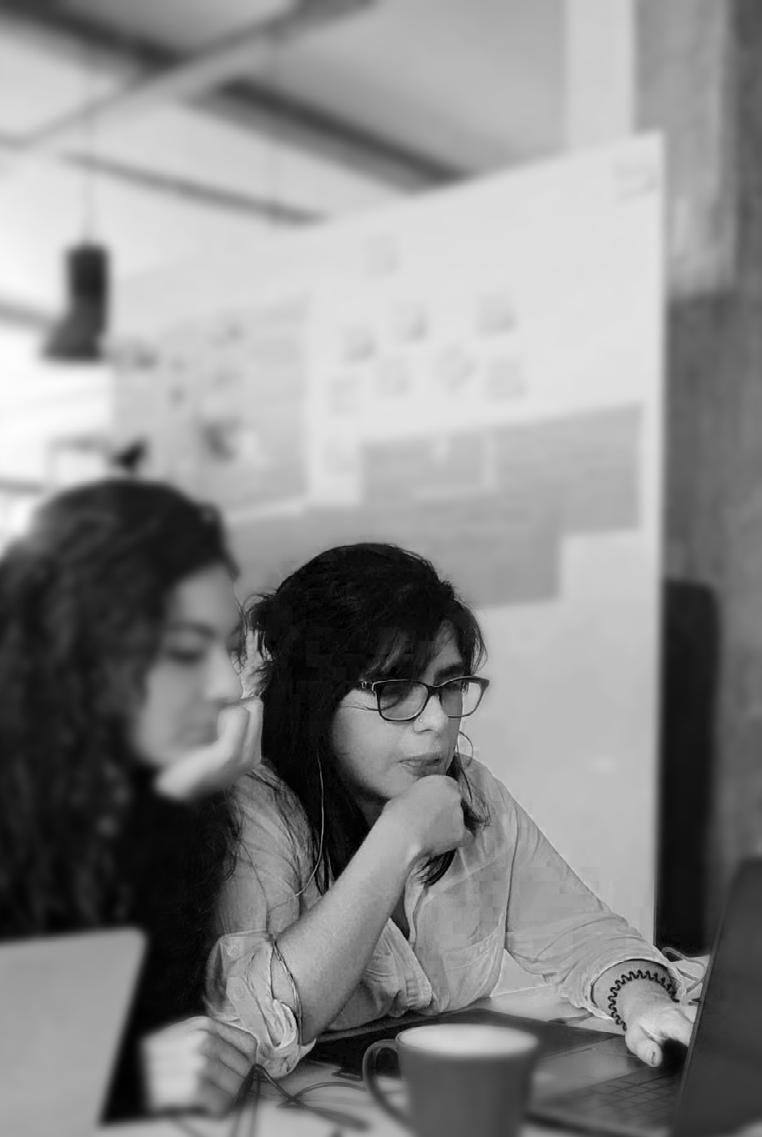
To this date, I have gained professional experience in the fields of jewellery design in Munich at the company LIFEstyle Group GmbH, medical design at the company WILDDESIGN in Gelsenkirchen and at the company BLEPS S.A. de C.V. during a 3-month short internship in Mexico City. During my internships, I furthered my education in the field of Design Thinking in general.
I studied my Bachelor’s Degree at the Industrial Design Re search Centre (CIDI) of the National Autonomous University of Mexico. During the last semester of my degree I had the opportunity to do an exchange semester at the Fakultät Ge staltung of the Hochschule Wismar. There I had the opportu nity to work directly for Volkswagen, as at that time the com pany was in close contact with the department of Industrial Design at the Hochschule Wismar. After doing an internship in jewellery design in Munich, I came back to Mexico and concluded my Bachelor Degree. After 2 years of experience in the Mexican working environment, I decided to return to Germany, which in some ways became more my home than Mexico. I even had the opportunity of making another se mester in Medical Device Design at the National College of Art and Design in Dublin.
At this point of my life, I’m 31 years old, and I finally feel ma ture and stable to be able to say that I am ready for a new era in my life: Professional and Health Stability.
My friend Laura and I, both of us of mexican nationality, together at the Muthesius Kunsthochschule

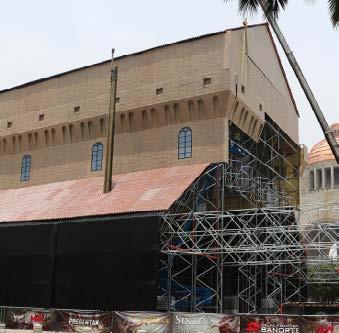



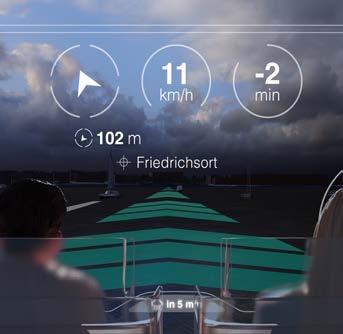













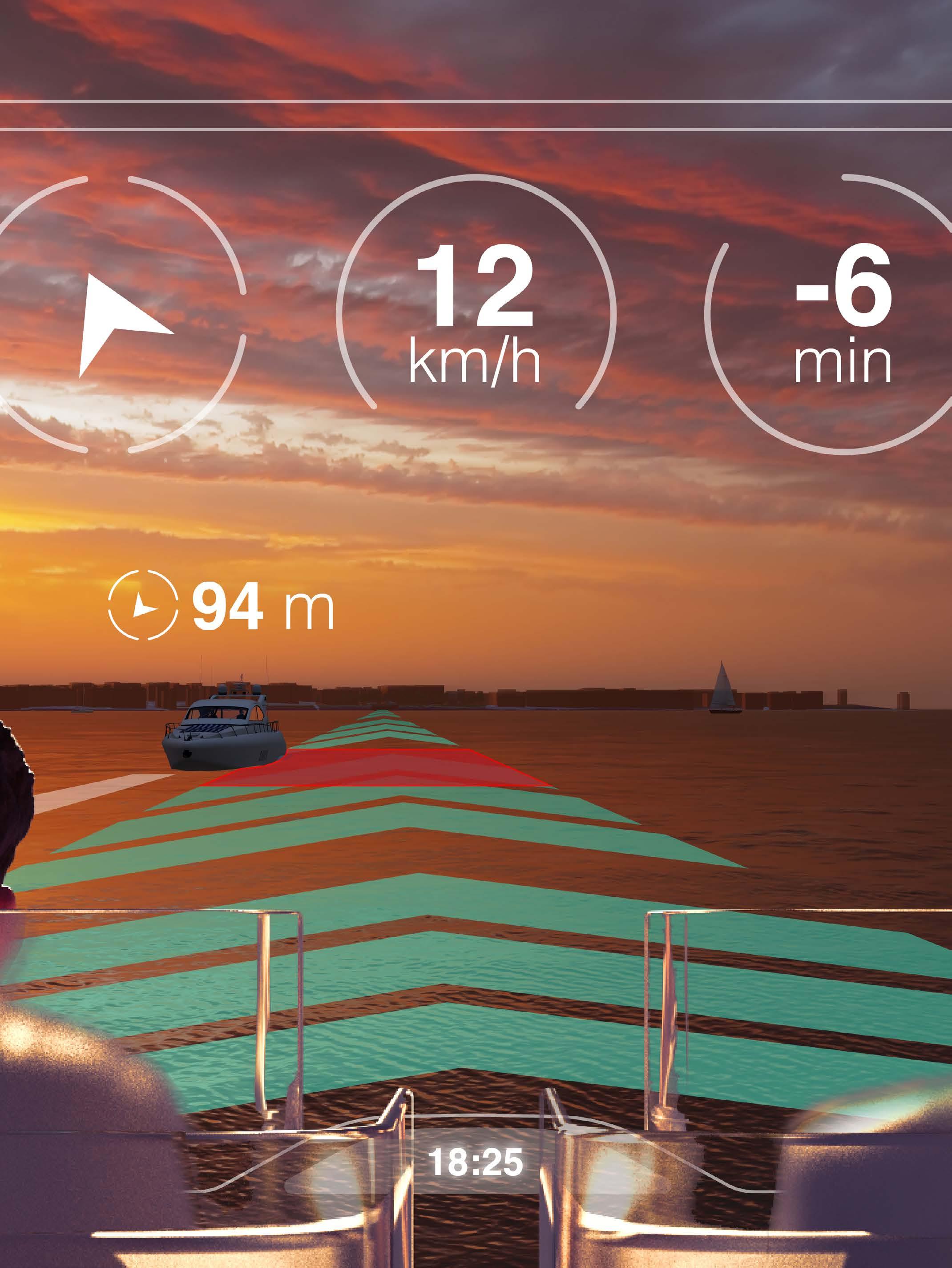



At the beginning of the project, I re united three people from different backgrounds, and during a brain storming session, I conflated a men tal map.
Through its development, I under stood how complex it is to design a transportation system, especial ly one that will not be controlled by a human and has to be innovative enough to drastically improve its users’ life quality drastically. When I realized the project was a whole new system integrated by other less complex and smaller projects, I was able to identify four main key points that needed to be developed.

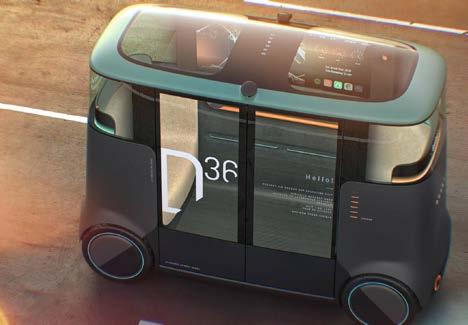
Länge
was decided that the system to be developed should an


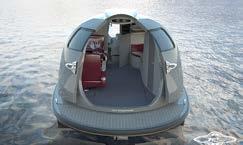







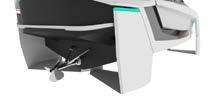

fast, always available and fi


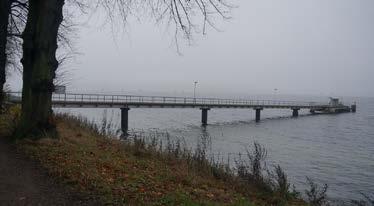
One of the better places to build a port in Kiel is




because is a
where a
of
live and have to
the central sta tion




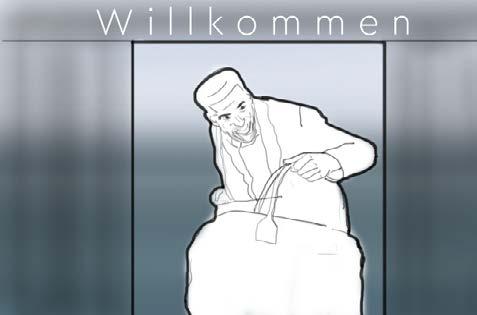

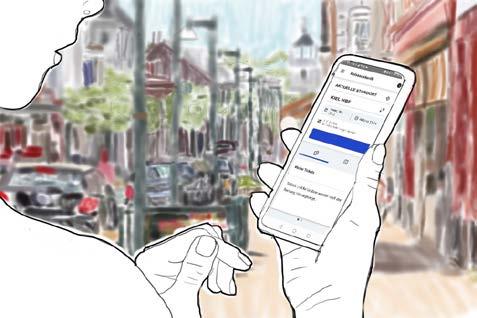
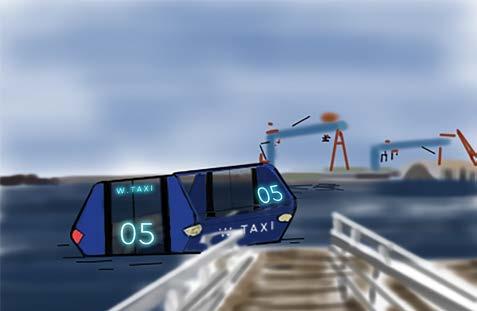
When the ship is over the road, the resulting geometry is indiciated in red.





She aboards the vehicle and confirms her trip.
She feels safe because W.Taxi indicates her when a ship is coming towards her and the precise distance from it.
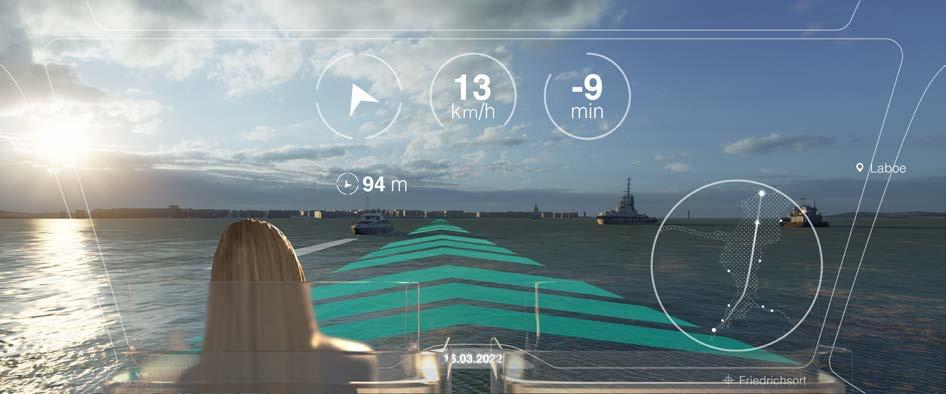



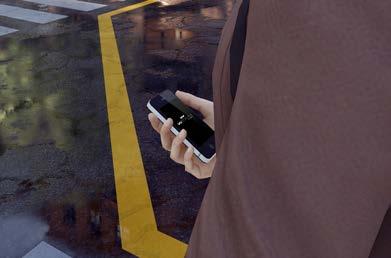

She can see exactly the place where the other ship will cross its way with the route ov W.Taxi
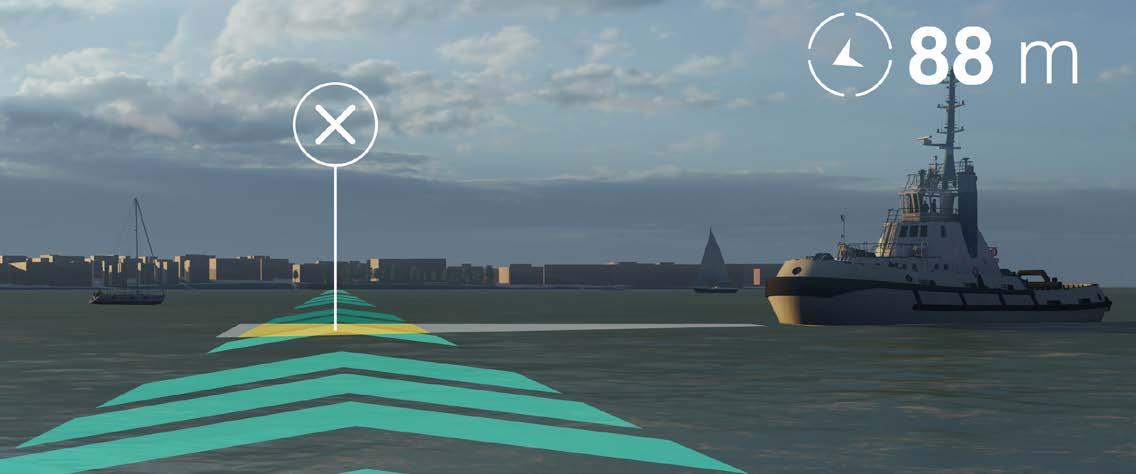

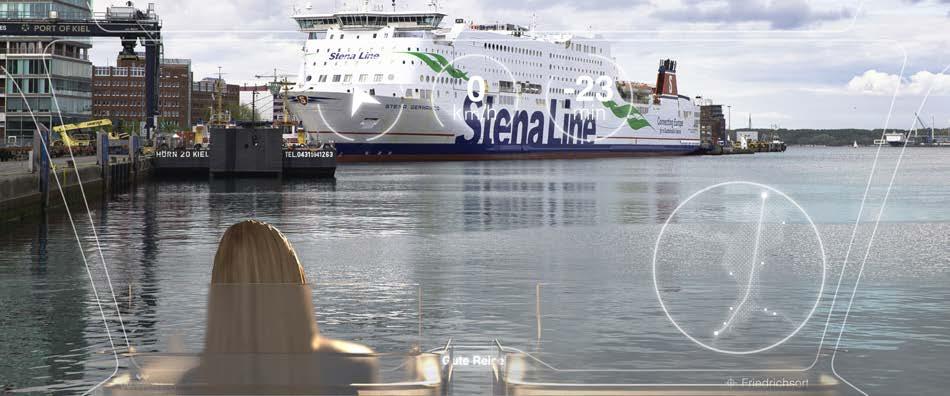

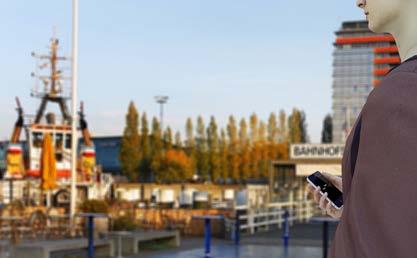
Her trip was comfortable, fast and safe. She wants to travel again with the W.Taxi.




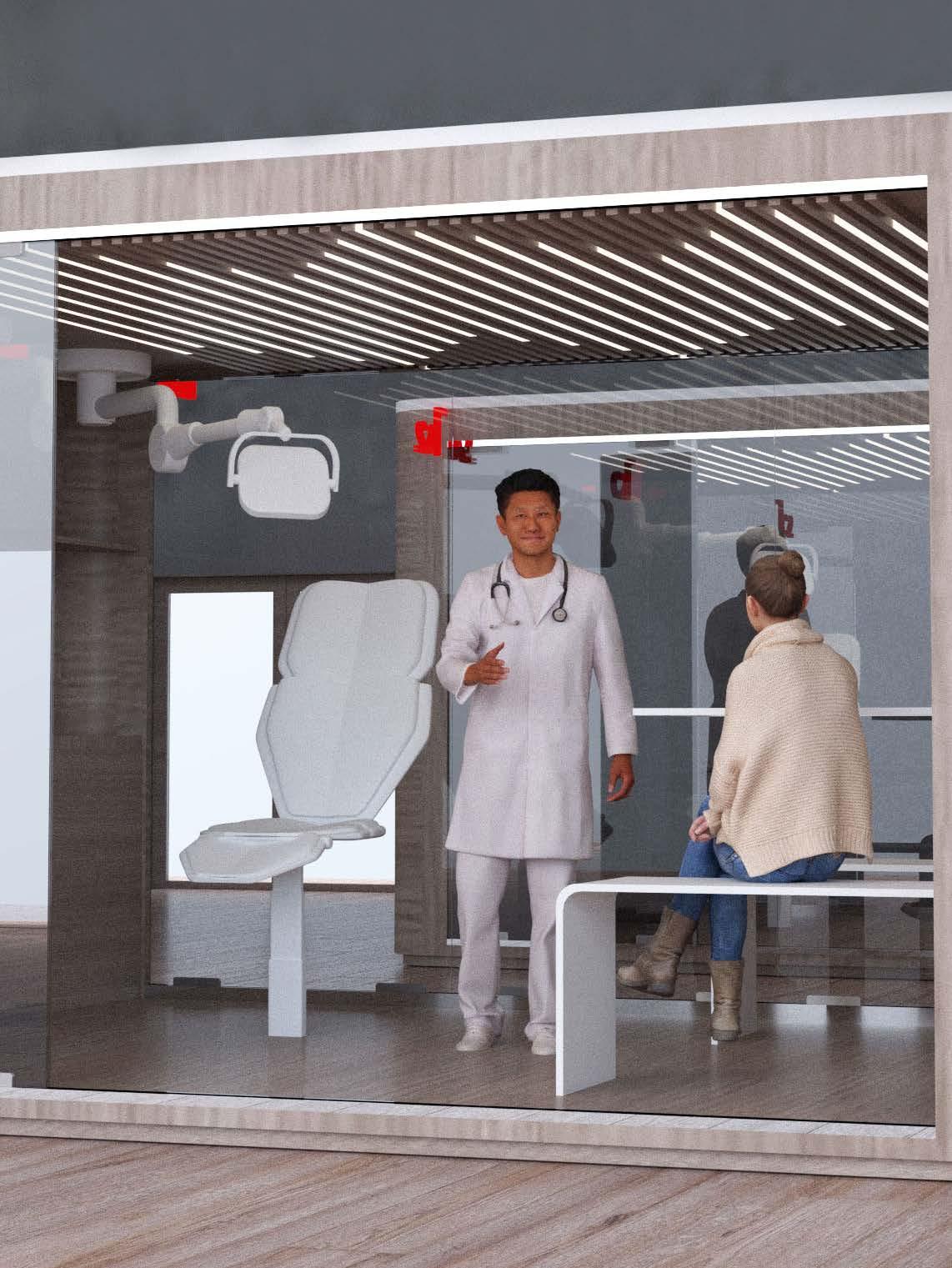
In July 2019, the Federal Ministry of Health presented a concept for reforming emergency rooms, in order to give a faster and more efficient service for those patients who by circumstances need to use emer gency rooms but are not in a life-threateaning situation. These patients normally have to wait long before they can be treated.
There waiting time is very irritating for them, because even if they are not in a life-threateaning situation, they may anyway be suffering, for example, in pain o discomfort.
This is why we decided to accelarate the process and make it transpar ent. We tried to use every second to achieve a fast and high-efficient emergency room.
CURRENTLY:
In the ERs there‘s often a lack of information and efficiency. Most of the time people arriving to the emer gency area are not in life-threatening situations and they are the ones that have to wait the longest.
On the other hand there is nothing more upsetting than not knowing how long you have to be waiting for your turn. One of the goals of this project is to keep the patients infor med at every step of the process.
And thanks to the information´s exchange and use of technology a more efficient emergency system can be created.
Depending on the seriousness of the symptoms, patients have to wait from 0 to approximately 4 hours. In our project we made use of the triage scale, which is the process of determining the priority of patients‘ treatments based on the severity of their condition or likelihood of reco very with and without treatment. Our main focus was on the minor urgency and no urgency situations (green and blue colors in the triage scale)
FUTURE: data analysis, no waiting time on site, transparent communication, self-test
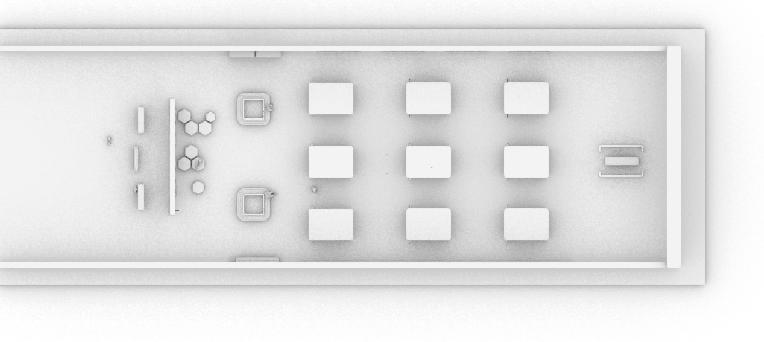
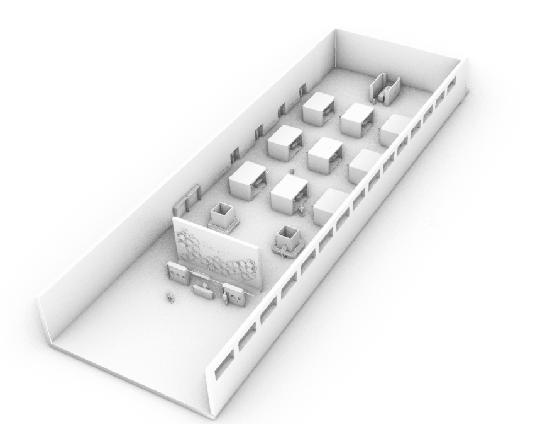
Access (Schock rooms, doctor’s lounge and the rest of the hospital)


This is the

Once you registered, you can go to the waiting area, which also has a children‘s area, adequated to their needs. The waiting area is comfortable and cosy, you can check which stations are occupied and which free, and also the estimated waiting time.

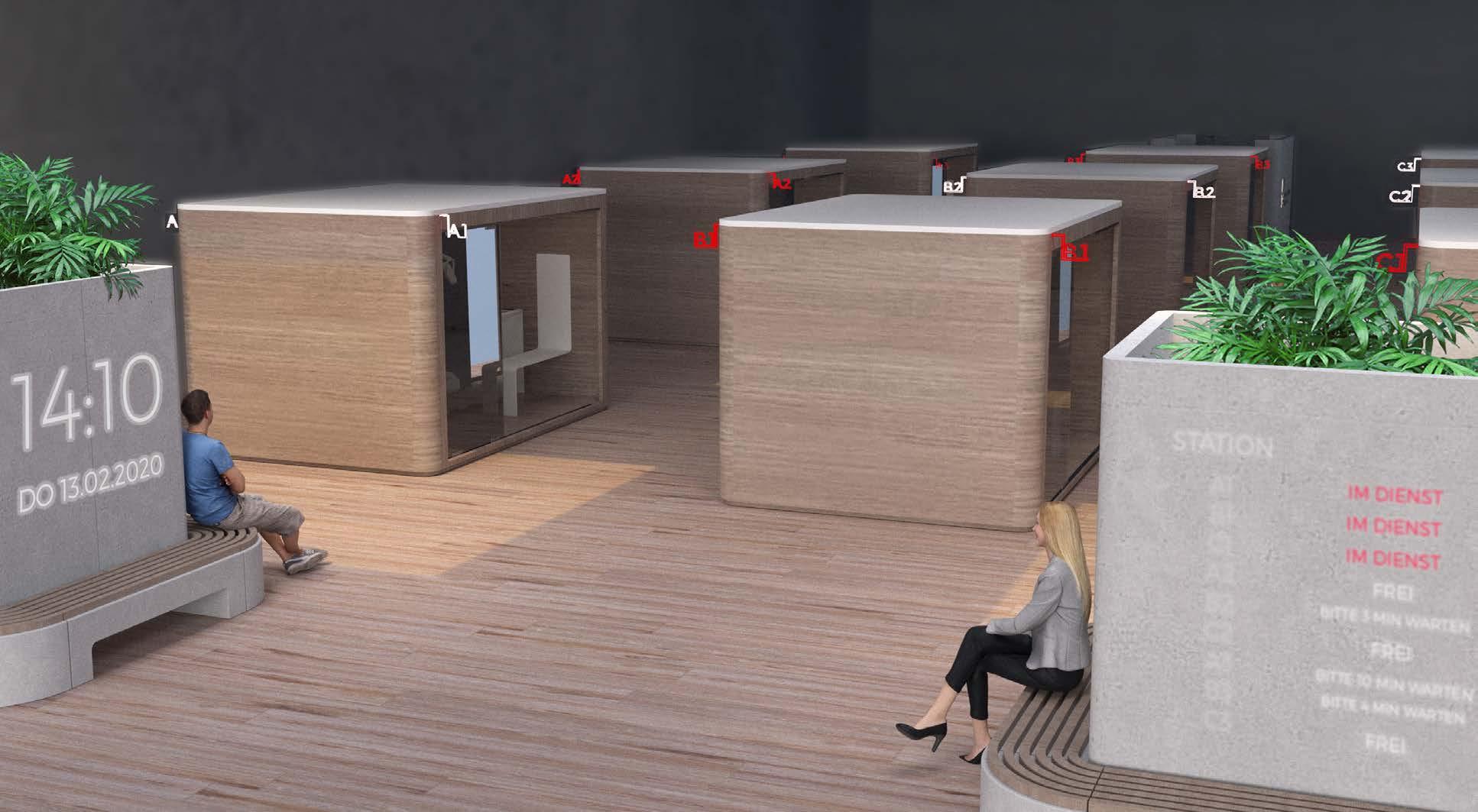
Once you are sitting in the treatment room, you can interact with the intelligent table and give your data and the reason why you are in the emergency room. This of course works with people that are not in an orange or red situation according to the triage scala.

After a few minutes, the doctor comes to you and checks if your registration was correct. You are then able to ask him whatever you want in a much friendlier and personal space.

Patients are treated in a comfortable ergonomic chair, which is very similar to dentist chairs. The doctor manages everything through the autonomous robots that bring medicine and other medical equipment.
These autonomous robots travel through the emergency room and pick up from the storage room medicine and medical equipment, then they transport the goods to the respective treatment room.
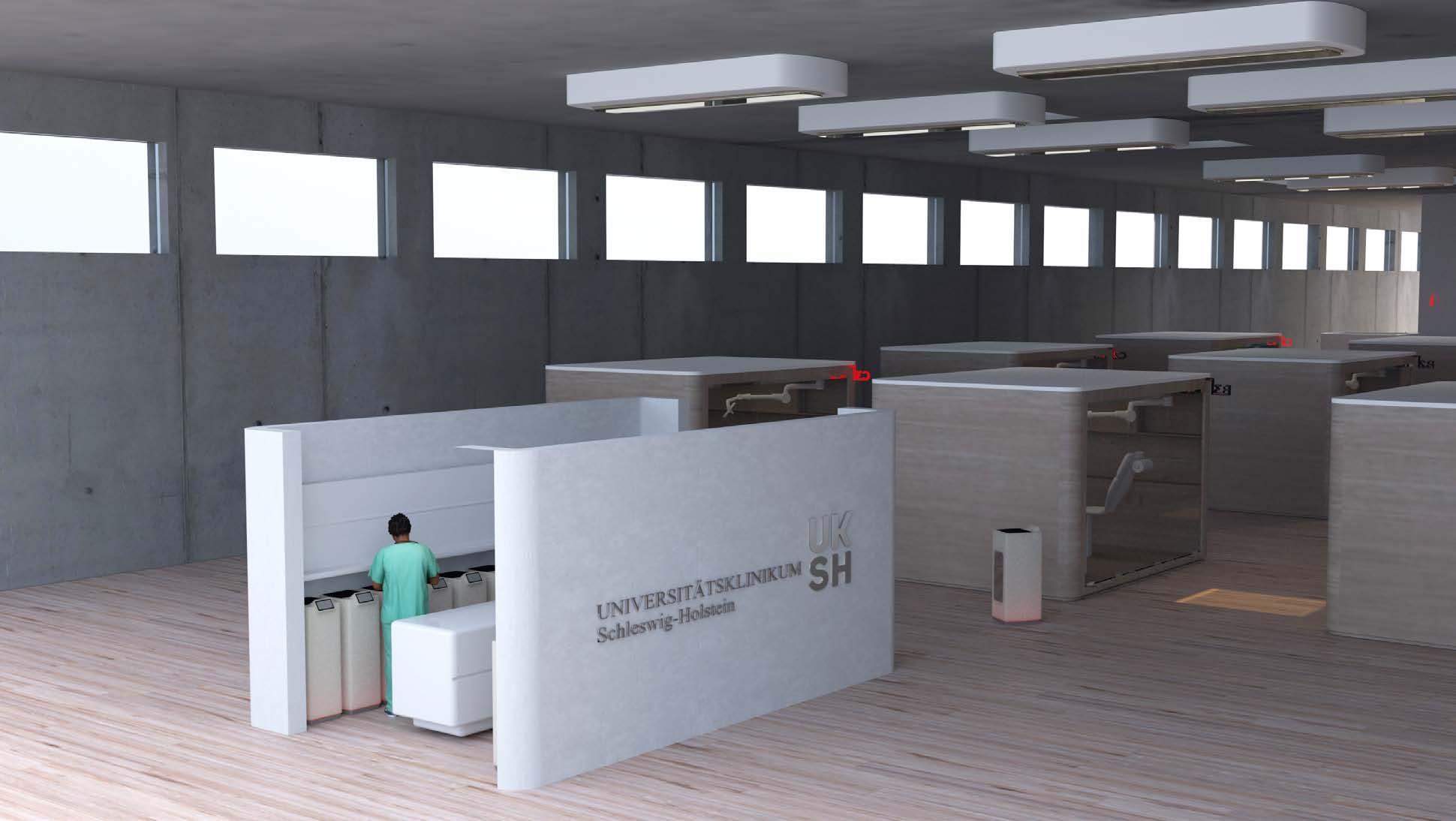

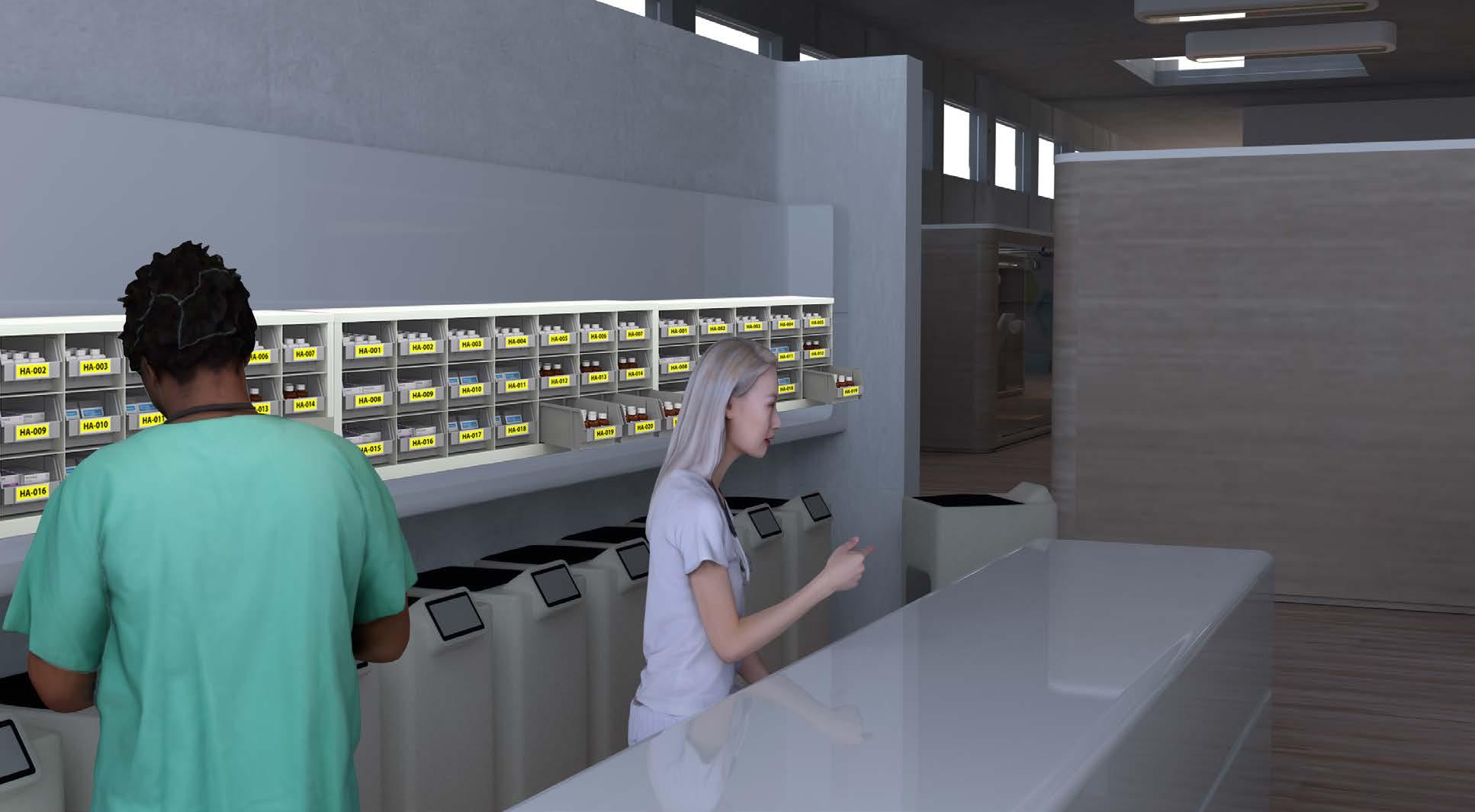
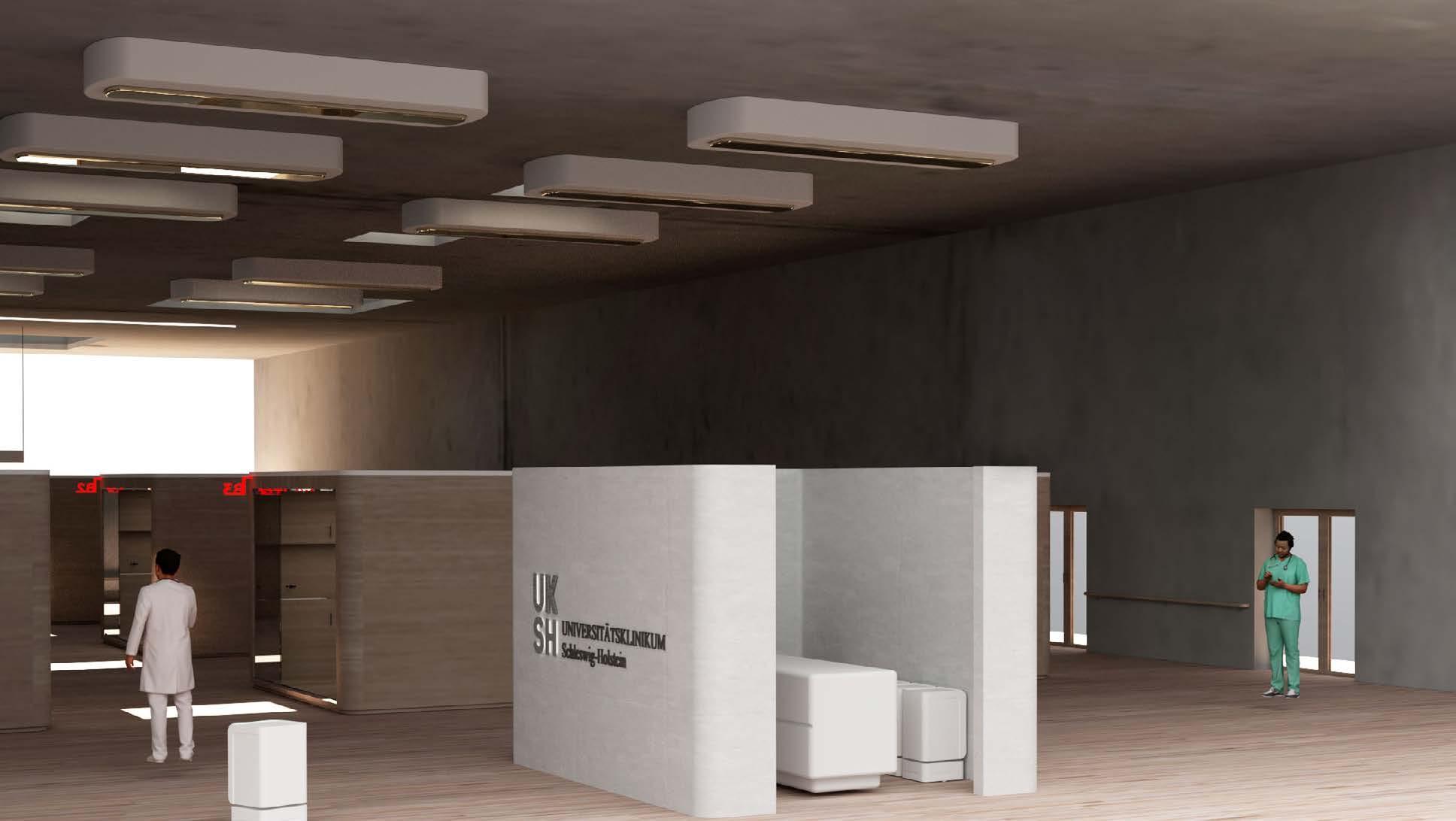


We tested our prototype in 20 different users, and the results can be seen in the upper diagram.

In this tests, we settled the correct hand orientation, the smalles and tallest percentil user and experimented with the ergonomics of the hand grip.




Grünhalter it’s aimed to solve the existing problem of dog faeces pollution in Kiel. There are around 16,000 dogs in Kiel that produce around 500 tons of feces every year.
The city is currently giving away 4.7 million plastic bags per year to collect dog ex crement, which only aggravates this problem. Because of this, Grünhalter proposes a system that enables the conversion of faeces into energy. This system consists of the parts: dispenser (bags), storage (dog faeces) and composte.
The objective is to turn this composting into energy or to use it for the agri culture sector.
Grünhalter will be placed in every park of Kiel and will replace the existing plastic bag system. Nowadays in Kiel, this plastic bag system just increase the pollution: instead of helping the city, it just makes worse the situation.
Grünhalter uses a new bag, water soluble, which allow to composte the dog feaces.



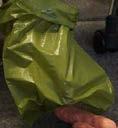


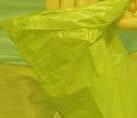

Every station has a container of 100 liter of capacity, so it just needs to be emptied twice a week,. It also has a bag dispenser which can contain 300 bags and a water bowl, to hydrate the dogs that visit the park. Grünhalter can also be easily used at night. It detects light changes, and when it gets dark, a fine LED strip turns on around the station
Grünhalter can also be easily used at night. It detects light changes, and when it gets dark, a fine LED strip turns on around the station..

One of the main objectives of this station, is the conversion of dog feaces into energy. The as thetic of the station integrates this concept into the station itself.


The stations have a bowl from which the dogs can drink water. The bowl can be easily fulled and cleaned, because it’s an independent part from the station.




The double container assures that the feaces stay fresher for longer time, avoiding bad odors and conglomerations of insects.


All stations have a lock, so the only user who can change the bags and empty the container, will be an authorized and trained worker.
The station is thought for 3 users: dog owners, dogs and workers (the personal in charge to clean and empty the container).



This station is personalized for “Grüner Schi et” but it can also be personalized for any oth er project or city.
















The user can check in 2 different ways that the container is available to be used: Analog and Digital
If the user is near a station, he can check through the app if the station is ready to be used. Its LED light will turn green if it’s ready and red if it’s not. In case that the station is not available, the app will also indicate where are the closest sta tions according to the user’s location. The digital function was thought for the users that are specially disgusted of gettiong slose to the container
The exterior container has perforations that allow the workers and dog-owners to see through them and check if it’s full or if there are other kind of residuals in side the container.


The city of Kiel is living a public transportation transformation era, in which a reliable water taxi system would cover a lot of the mobility needs required nowadays and in the future, particularly if the aim is to respect the city’s sustainable vision, as well as its interest in improving its citizens’ life quality.
Mobility is a crucial topic when we talk about improving life quality, and one of the aspects that will change massively due to technological in novation and behavioral changes. The ownership of private vehicles will decrease; thusly, the combination of multiple modes of transportation will become more prominent in cities.


We brainstormed and used different design methods to get our first ideas. Our research at the VW Factory allowed us to know that we needed 2 different sizes: one to weld the front part of the car (small) and another one to weld the doors (big).

Testing


Then we developed new simulators to proof and correct the use of our designs proposals.
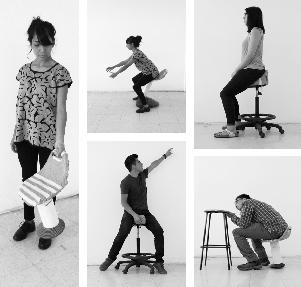
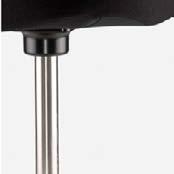

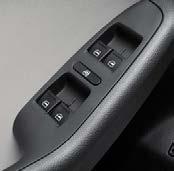
We worked together with VW, there fore, the aesthetic analysis was based in the aesthetics of VW cars and cor porate design. With help of this analy sis, we recognized the main aesthetic values, which were: Vanguard, prac ticability and durability. Based on the determined values, we made a second aesthetic analysis, but this time about furniture with the porpuse of helping the further development of the seats.



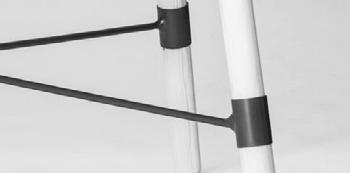
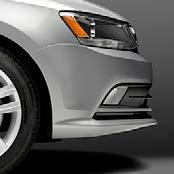




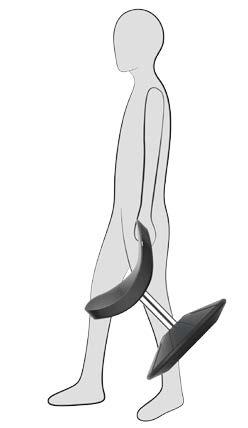
The end result of the research, analysis, observation and testing processes was the design of two auxilia ry chairs. A low chair to work at a height of less than 50 cm and a high chair to help prevent fatigue in the lower limbs when the worker performs tasks that take place in a fixed standing position.


It is especially helpful for mounting the front bumper.
The function of the chair can be resumed in the freedom of movement through the shape of its base. The base of the chair has an angle of 18º with respect to the floor, along the entire circumference of the base.

This angle is used by the user to tilt the chair in any direction he needs. He tilts the chair with his legs and can bend his legs or stretch them, depending on the position or inclina tion he needs. If the user stands up while the chair is tilted, the angle will cause the chair to automatically return to its original position. The chair is lightweight and can be easily transported to any location in the factory.



The industrial processes to produce this chair are wide spread and inexpensive: CNC routers, industrial knitting, fiberglass forms and welding. Therefore, the chair has the advantage of being able to be produced very simply and rel
atively cheaply
This chair is designed so that the user can swing his legs. The seat helps him maintain a proper posture and strengthen the muscles of the abdomen, spine and legs.
The foot of the low chair measures 450 millimeters in diameter, which makes it sturdy and allows the user to balance his or her legs as he or she inclines up to 18 degrees.
 VINYL MEMORY FOAM
STAINLESS STEEL
FIBERGLASS HEXAGON HEAD SCREW
ABS+STEEL
VINYL MEMORY FOAM
STAINLESS STEEL
FIBERGLASS HEXAGON HEAD SCREW
ABS+STEEL
This chair helps the workers in the activities of welding and general assembly. The seat tilts and its height can be adjust ed by the user to improve the comfort during the working day
The height of the chair can be changed within a range of 55 cm to 75 cm. This allows the chair to be used effectively by any operator on the production line, regardless of his body size.
You can set the degree of the seat angle according to the weight of each operator with the button on the bottom of the mechanism. Once configured, it is not necessary to change it again unless another worker uses the chair.

The industrial processes to produce this chair are wide spread and inexpensive: CNC routers, industrial knitting, fiberglass forms and welding. Therefore, the chair has the advantage of being able to be produced very simply and rel atively cheaply.
The industrial processes to produce this chair are wide spread and inexpensive: CNC routers, industrial knitting, fiberglass forms and welding. Therefore, the chair has the advantage of being able to be produced very simply and rel atively cheaply.
This chair is designed so that the user can swing his legs. The seat helps him maintain a proper posture and strength en the muscles of the abdomen, spine and legs. The foot of the low chair measures 450 millimeters in diame ter, which makes it sturdy and allows the user to balance his or her legs as he or she inclines up to 18 degrees.



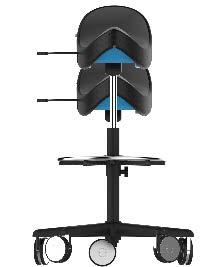


During the creative process, we realized that our chairs could work in many dif ferent contexts besides the automotive industry, because its function is very useful in any environment. Especially the high chair, is very suitable for any activity in which a desk or a table is in volved.




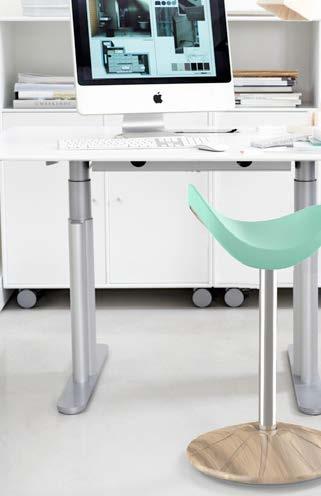


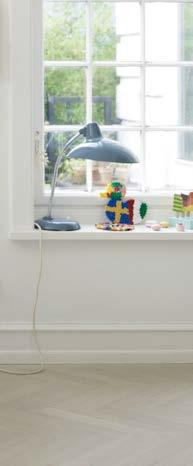
Because of the good acceptance of the project at the Volkswagen Factory, we were asked to plan and build prototypes of both chairs.


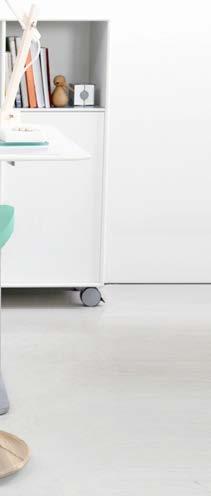
The prototypes were very useful to find new benefits and also to improve mistakes. The manufacturing process was also very inter esting: we learned a lot about controlling a CNC router and thermoforming.
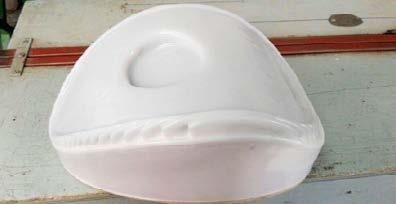





Lerni is a small bycicle for children between 2 and 6 years old.
In 2015, Provinilo, a group member of the Mexican National Chemical Industry Association, promoted the sustainable development and com petitiveness of the plastics industry.
“Imagine PVC” is a yearly contest, where they reward the creative talent of industrial design and architecture students.
The goal of this competition is to promote the use of PVC Plastic to develop innovative and sustainable products among the students of Industrial Design and Architecture.
This award is sponsored by companies in the Mexican plastics market to create a productive link between the companies and industrial de sign or architecture schools. I got an Honorific Mention with Lerni.

For this project, I did an analogous analysis of the bicy cles that are on the market. Most of the bikes were quite impractical, heavy and therefore dangerous in case the child falls.
For the bionic analysis, I decided to lean the design on the structure of sponges. Sponges are very resistant, but light at the same time, characteristics that I wanted to in tegrate to my design.



For this project, I did an analogous analysis of the bycio cles that are on the market. Most of the bikes were quite impractical, heavy and therefore dangerous in case the child falls.



For the bionic analysis, I decided to lean the design on the structure of sponges. Sponges are very resistant, but light at the same time, characteristics that I wanted to in tegrate to my design.
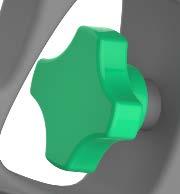
I identified the target group of Lerni to deter mine the color scheme.
During this process, I learned a lot about color theory and explored some possible color vari ations based on our users (children between 2 and 5 years).
The following render is based on the color scheme of this research.


During





In this part of the portfolio you can see the projects I directed in Mexico, as well as others in which I participated as an industrial designer.

Amate Diseño is a small design company in Mexico City founded 20 years ago by two industrial designers from my universi ty. They produce any kind of product, de pending on the projects they receive, but especially furniture.

I was in charge of two projects: two 1:33 scale models, the Baroque Museum and the Ferris wheel “Estrella de Puebla”. The models had to be resistant to external con ditions. Both were set up in a miniature park for the government of Puebla.












Kye Cubica was a scenography society in the southern part of Mexico City.

I worked for them in 2014/2015 on the project of the “Sixtine Chapel in Mexico City”, an exact 1: 1 replica of the original from Italy.
I was in charge of the technical drawings for the architectonical team of the society of the small parts of the constructions such as: columns, doors, atriums, etc.







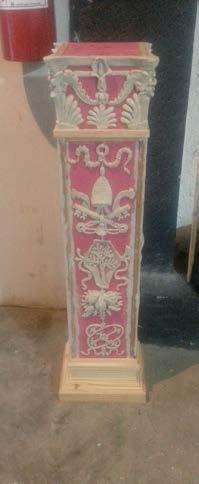



In the first semester of my master at the Muthesius Kunsthochschule we worked a lot in Information Design.
Celular metabolism was analyzed through an infographic, where the process was illustrated and ex plained. From this part, we learnt the importance of carbohydrates, proteins and fat in our diet.



in 2015 I took a class of entrepeneurship which was called “Serie Cero”.
I got busy learning how to make shoes, out of PET fabric.

So in order that the shoes were of good quality and comfortable to walk, I made a research of the best leathers that existed at that time in Mexico.
That was how Pet.its was born.
Pet.its are a high-quality ballerina shoes, comfortable enough to wear everywhere as a urban shoe and pretty enough to com bine with your dress or leggings.
They had a lot of success and I managed to sell them in the MUAC (“University Mu seum of Contemporary Art”)
I also made the calculations of costs, each pair was worth only around 25€.



I’m a person who vents my emotions through music. Ever since I was a lit tle girl when I listened to the radio in my parents’ car I was a fan of The Beatles. Then with time my musical taste devel oped until now. I couldn’t imagine my dai ly life without my music playlists on Spoti fy, or discovering a new band on Last.fm.
That’s why in 2014, when I had the oppor tunity to take part in the workshop “The Cover Records” I immediately signed up.

In this workshop we experimented with dif ferent techniques and materials to design CD and vinyl covers.

The workshop was directed by the famous illustrator Alexander Schmidt.






The second workshop I did related to music, was just before I started my master studies. We explored how songs/tracks/songs inspire or can even be directly transformed into im age stories, i.e. sequential narratives; and what role do lyrics, structure or the atmosphere of the music play?
We used a digital duplicator called Risograph, which only printed in 2 Tints. It was very interesting to learn about the process of this retro-print er, the results of all students were amazing.












Ariel Rojo is a mexican designer and stu dio dedicated to enhance the quality of life through design solutions. Conscience, re sponsibility and humour are the key ingre dients of Rojo’s design philosophy.
This workshop was a collaborative project between Rojo and students from different design schools to develop functional prod
ucts that could encourage reading.
I developed a memory game, which en courages children to read through the as sociation of images and texts taken from their favourite stories.
Children are motivated to learn new stories in order to continue playing.


“Design is about leaving the world a better place than when you arrived”
/amoradov91
/abrilvillanueva_id
Abril M. Villanueva Industrial Design